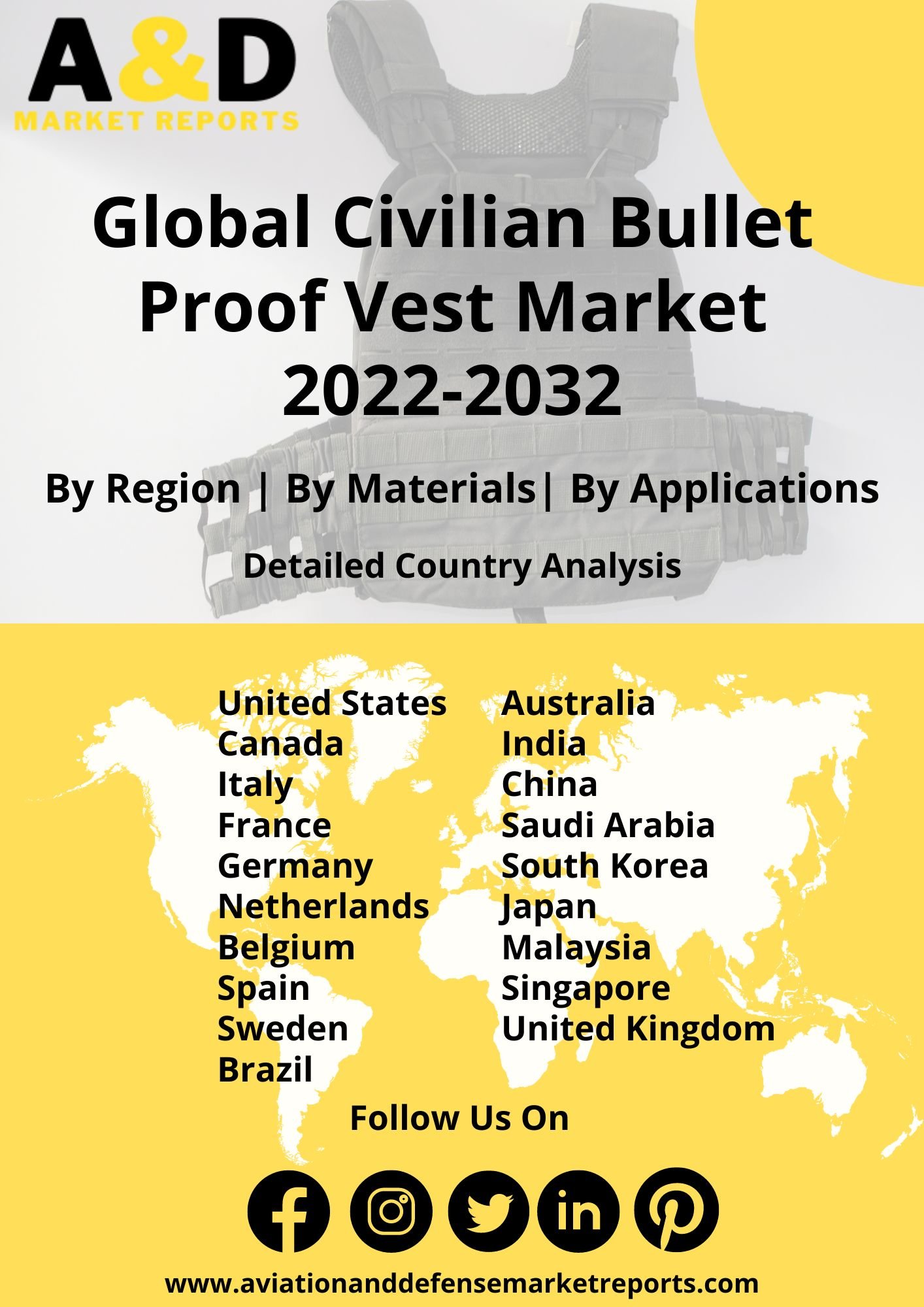Description
Body Armor is used to protect incoming targets like bullets and shrapnels. These body vests are increasingly used in a military environment. However, the market penetration of bulletproof body vests has been growing in the civilian market owing to the growing demand for safety. Commercial trade of bulletproof vest for civilians is permitted across the global markets. However, the import and export of military-grade body armor is prohibited within the EU. Protective standards above NIJ 4 are classified as armament material within the European commercial bulletproof vests market. According to studies, bulletproof vests are available at B2C outlets like shops across the EU.
However, the possession of bulletproof vests is restricted by several norms and regulations across the world. For instance, the purchase and ownership of ballistic vests and body armor is not restricted within Italy. Moreover, several laws and court rulings in the past have revised and rehearsed the market for ballistic vests. Civilians who are presently employed in the private security sector have been mandated by the Italian government to wear ballistic vests while working.
The ownership of ballistic vests across Australia and Argentina is guarded by regulations. Therefore, only licensed individuals have the liberty to own ballistic vests within the mentioned markets. Thailand is another market that restricts the possession of bulletproof vest for civilians. Roughly 5 years of prison sentence is levied on the illegal possession of body armor. Contrarily, the United States restricts the possession of body armor only amongst convicted felons.
The propriety possession of bulletproof vests is guarded by penalties amongst felons. The laws for the possession of bulletproof vests vary across Canada. Alberta, British Columbia, and Manitoba are some of the states that restrict the illegal possession of bulletproof vests. The provincial government is responsible for certifying individuals with a license to own ballistic vests in the mentioned states. The imposition of these norms restricts the total addressable market for civilian bulletproof vests. The regulations are imposed majorly due to a surge in the crime rate across the global markets. An increase in terrorism, mugging, and other counter band activities are considered to be some of the key factors for the imposition of the said norms.
On studying the supply aspects of this market, it is noted that material science engineering and advanced materials play an integral role in the fabrication of bulletproof vests. Some of the commonly used fibers in the construction of bulletproof vests include Nylon, Kevlar, Twaron, Spectra, and Polyethene Fiber.
Kevlar is recorded to account for the largest market share in terms of the material of construction used for the fabrication of body armor. Kevlar is an aramid, i.e. it is composed of heat-resistant fibres. The material is related to materials like Nomex and Technora that are used in aerospace and defense-based applications. The material was created by DuPont in the year 1965. The commercialization of this material commenced in the 1970s with the replacement of steel in racing tires. Typically, Kevlar is spun into fabric sheets or in the form of ropes. The material is then used as a component for the manufacturing of composite materials.
In terms of strength to weight ratio, Kevlar is 5 times stronger than steel. Therefore, the material is used in the fabrication of personal protection systems (articles of clothing like gloves, jackets, etc) and personal armor. In Military applications, Kevlar is used as a component in the manufacturing of ballistic vests, bulletproof vests, ballistic face masks, combat helmets, etc.
Newer materials that enhance performance and sustainability are being introduced into the body armor market. For instance, the company EnGrade has been making efforts to reduce the carbon footprint generated during the manufacturing of armament materials. Dyneema is one such material that reduces carbon footprint by roughly 30% as compared to aramid vests. The application and market penetration of these products into the civilian environment is yet to be discussed. However, speculations suggest that increased awareness amongst the population regarding environmental degradation is poised to boost the adoption of bulletproof vests made out of plant-based materials and sustainable alternatives in the civilian environment.
The regional competitive mapping for the bulletproof vests market suggests that North America accounts for the largest consumer base within this segment. This is predominantly due to the legality and regulatory norms imposed within this nation. Consecutively, APAC is anticipated to be the fastest-growing market owing to the expanding crime rate and border tensions within this region. The requirement for civilian safety is poised to propel the demand for bulletproof vest for civilians within this region. The legislative norms in developing countries are less stringent about the possession of bulletproof vests. Thus the acquisition and usage of the same are easier within these markets.




